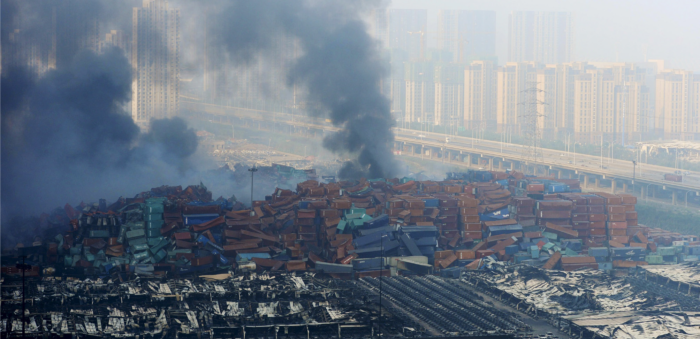Container fires are now happening on a weekly basis and the majority of these cases are associated with cargo misdeclaration. However just as with tackling the fire itself, tackling misdeclaration is a significant industry challenge.
Cargo fires represent potentially catastrophic risks. The crew is in great danger when a fire breaks out on their ship and every unsuccessful attempt to extinguish the fire increases the risk of serious harm to people, the environment and property. Most container fires are associated with cargo misdeclaration, which becomes a first line of defence against the risk of fire.
According to the International Cargo Handling Coordination Association (ICHCA), there 180 million TEU movements in 2016. Of them 60% is ontainer Transport Units, 50% of which are laden, and of which 10% contain declared dangerous goods. The difficulty is when the amount of dangerous cargo is not declared or is misdeclared.
[smlsubform prepend=”GET THE SAFETY4SEA IN YOUR INBOX!” showname=false emailtxt=”” emailholder=”Enter your email address” showsubmit=true submittxt=”Submit” jsthanks=false thankyou=”Thank you for subscribing to our mailing list”]
The number of fire has been increasing rapidly in the last decade, which reflects the increasing number of containers transported. However, this data exclude a number of cases that are known to insurers.
Many of them are associated with cargo being misdeclared. Namely, Gard Club reports that some of the fire incidents involve calcium hypochlorite misdeclared as “organic surface”; “calcium chloride”; “disinfectant”and “whitening agent”. Calcium hypochlorite can be very hazardous because it decomposes and emits heat during decomposition. If that process is accelerated by poor packaging that does not allow heat to escape, or from external heat sources, the rate of decomposition increases and if this becomes violent an explosion can occur.
More than a quarter of incidents reported to CINS involve misdeclaration. The risk of fire because of misdeclaration of dangerous cargo is compounded by the difficulty of fighting fires on larger vessels. Additional Class Notations for fire-fighting have only addressed deck fires and many organisations, have focuses on the adequacy of fixed CO2 and water-based firefighting systems in containership holds.
Banning the carriage of hazardous products is not a long term solution. Blockchain technology is vital to help combat misdeclaration. Some carriers use software that scan bookings. However, the risk of misdeclaration will remain.































































